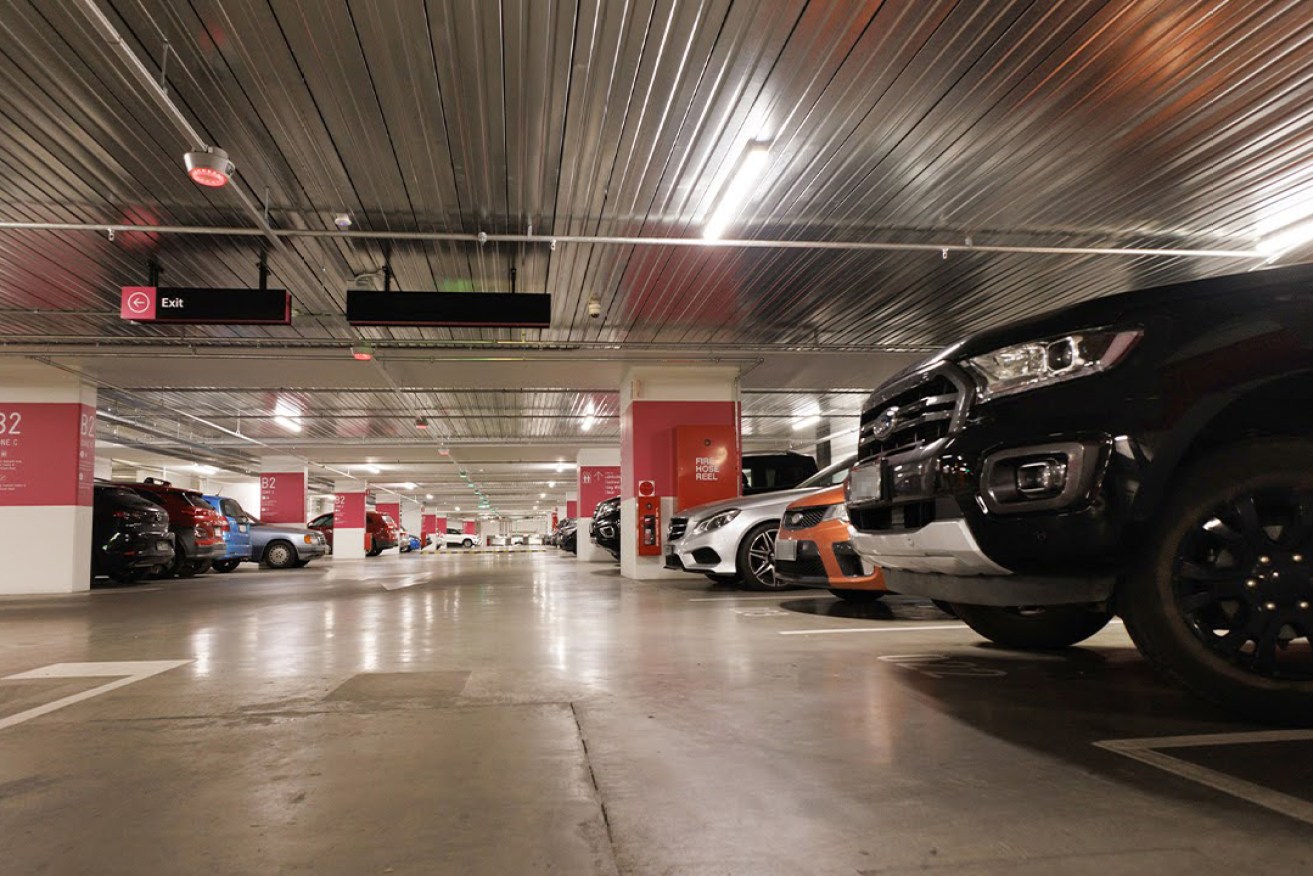The mine is bigger than yours mentality clogging our carparks
Charging drivers of humongous pickups for the space they take up could be a first step in stemming the craze for oversized utes, writes Ali Clarke.


Last year 78.4 per cent of all car sales were utes and SUVs. Photo: Tony Lewis/InDaily
Yank Tanks, super-size pick-ups, monster trucks… whatever you call them, the massive utes and SUVs that increasingly blur the line between a passenger vehicle and a truck are here to stay.
While some experts point to tax perks and increased marketing spends as the reason behind our newfound love, I think it’s more down to us not being able to see past the damn truck in front and feeling compelled to join in the ultimate rolling game of mine’s bigger than yours.
In fact, last year when we were all busy setting the record for the highest number of cars sold in Australia, not a single hatchback nor sedan made the top 10.
Instead, 78.4 per cent of all sales, were light commercial vehicles (utes) and SUVs, with passenger vehicles making up just 17.3 per cent of cars sold.
Whatever the reason for this super-sizing race, it is clear neither our roads nor car parks are ready for them.
Don’t get me wrong, I love my second-hand 4WD.
We bought it when we had to fit three kid’s car seats behind my husband’s six-foot-six frame. In short, it was one of the only cars that could physically fit us all in and, contrary to most of the 4WDs you see in line at school pick-up, we actually do take it off-road quite regularly.
The kids call it Pearly Storm Trooper and it’s served us (and their school friends) well, but when our large-bodied car is increasingly dwarfed on suburban roads by things with names like Raptor and Ranger and RAM, one can’t help but feel like a Lilliputian in the land of the giants.
Well, on Tuesday night an inner-city council of Melbourne unanimously backed a motion to investigate “ways to make travelling on streets more equitable and discourage large and heavy vehicles … by considering proportionate parking fees based on a vehicle’s size”.
Far be it for me to like a tax, but I reckon I could get on board with this one.
Car experts will no doubt think I’m a squib. Paul Maric of carexpert.com.au has been quoted as saying this is nothing more than a money grab and a further slide into woke-topia where no one drives and everyone’s on bikes or piloting electric vehicles.
He and the other naysayers will hate that similar investigations are also on the drawing boards of mayors in Sydney. As I struggled to get into (not out of) a park in my local shopping centre the other day, I couldn’t help but hope Adelaide mayors get on board too.
You see, these super utes and SUVs come to us from the country where they live, breathe and shoot bigger is better; the almighty United States of America.
I was fortunate to travel there with our family over Christmas and as our stomachs steadily expanded thanks to their insistence on ridiculous portion sizes, driving the freeways of California, Nevada and Arizona the car bloat was obvious.
Apparently, their love and our subsequent fawning can be traced back to 1975 when the US government divided vehicles into two categories; passenger cars and light trucks, which back then were mostly used on farms and as work vehicles.
They were certainly not seen on city streets nor on the grocery run.
These pickup trucks answered to more lenient emission and fuel economy standards, so much so that just two years ago, the average new car in the United States weighed more than two tonnes.
Such is their popularity that the tax and regulatory standards around them have been coined with such natty terms like The Light Truck Loophole, The Hummer Deduction or my personal favourite, The Chicken Tax, which is a throwback to WWII commercialism driven by cheap chicken prices.
To save you from disappearing down the wormhole of foreign tax policy like I did, essentially, they chucked a 25 per cent tariff on the cheaper, smaller Japanese and European SUVs and utes in retaliation for them penalising cheap American chickens and now, all these years later, the vehicle lockout remains long after the other restrictions have been lifted.
When you combine the much higher profit margins, these loopholes that have seen designers actually add weight to get the sales and a focus on the strength of homegrown car manufacturing, it’s little wonder America is leading this charge.
Ahem, Australia.
But back to those interstate councils whose biggest concerns seem to be environmental, amenities and safety.
Whilst these massive vehicles dominate the Top Ten safety lists for those inside, they also top the Top Ten most dangerous for those around them.
Let’s face it, being inside a tank is always much safer than being hit by a tank.
Look, I don’t know if these Australian councils will end up adopting any new regulations, but it’s definitely a conversation we should be having.
Even if we just start charging the drivers of these humongous trucks to pay for the parking spaces they actually take up.
That might take both the yank and wank out of it all, and we can get back to driving cars that actually suit us and our roads.
Ali Clarke presents the breakfast show on Mix 102.3. She is a regular columnist for InDaily.




